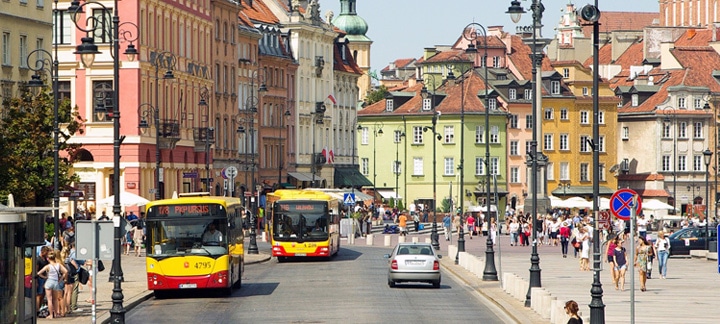

Poland has long been something of an “emerging” wine market in Central and Eastern Europe — not yet in the leagues of France or Germany, but steadily growing in importance. In recent years the Polish wine import landscape has matured: more players, more diversified sourcing, shifting consumer tastes, and evolving channels. Below we take a forward look at the key trends shaping Poland’s wine imports in 2024–2025, and highlight strategic opportunities for exporters targeting the Polish market.
The Current Landscape: A Baseline from Recent Years
To understand where Poland is headed, it helps to recap where it has come from. As of earlier reports:
-
In 2018, over 60 % of Poland’s wine imports came from the “classic” European producers—Italy, France and Spain—while regional peers like Germany, Georgia, Romania, Bulgaria, and Moldova also contributed meaningful volumes.
-
Poland’s per capita consumption was modest in 2016 (~6 litres per person) but trending upward.
-
Analysts have long considered Poland a “growth market” for wine: for example, WineAustralia’s bulletin ranked Poland among the more attractive markets thanks to sustained imported wine growth and rising consumption.
-
More recently, a market outlook report projected that Poland’s wine demand (in volume) would reach ~149,000 metric tons by 2028, growing from around 140,000 in 2023, representing a roughly 1 % annual growth.
These signals suggest a moderately expanding base. But 2024–2025 brings new dynamics—some accelerations, some headwinds.
Import Trends & Shifts in 2024–2025
1. Continued Diversification of Origins
While Italy, France, and Spain remain core suppliers, Poland has shown increasing openness to non-traditional sources. According to OEC, in the period 2022–2023, the fastest growth in wine import values to Poland came from:
-
Italy (an increase of ~USD 16.9 million)
-
France (+USD 10.8 million)
-
Portugal (+USD 7.03 million)
This suggests that even among “classical” origins, exporters who can differentiate (e.g. lesser-known appellations or styles) may find traction. Meanwhile, there is room for New World and emerging producers to make inroads—especially in the mid-to-premium tiers.
2. Slower Growth, But Resilience in Premium Segments
On the global stage, wine imports in 2023 saw some contraction: global volume declined ~3 % and value ~2.2 %, reflecting pressures from inflation, shipping, and cost pressures. Poland is not immune to these macro forces, especially given its geography, logistics dependencies, and sensitivity to price points.
However, the premium and specialty segments are showing relative resilience. In Poland, consumers are gradually stretching toward more expensive bottles, and the on-trade (restaurants, wine bars) is pushing demand for interesting, story-driven wines. Observers in Polish retail note that consumers are slowly shifting away from mass-market €4 bottles to more exploratory options.
3. Rise of E-commerce and Specialist Retail
The pandemic accelerated online wine sales across Europe, and Poland is no exception. Specialized wine retailers and small-chain supermarkets now account for over a third of wine sales. The convenience and reach of digital retailing is especially appealing in a country with a dispersed population and many smaller cities.
Moreover, wine lists in retail (and especially in the on-trade) are increasingly curated: buyers are looking for differentiation, labels with narratives (terroir, authenticity, sustainable practices), and packaging formats beyond the standard 750 ml.
4. Greater Emphasis on Branding, Sustainability & Traceability
Polish buyers are becoming more discerning. Beyond the basics of price and varietal, they favor:
-
Clear provenance and regional identity
-
Certifications (organic, biodynamic, sustainable)
-
Unique or niche offerings (lesser-known appellations, natural wine, single-vineyard bottlings)
-
Alternative packaging (bag-in-box, cans, smaller formats) — in Poland, even macro buyers like Makro now offer > 40 SKUs including bag-in-box lines.
These trends mirror those seen in more mature markets, and exporters who proactively embed them in their offering may find competitive advantage.
5. Domestic Wine’s Rising Profile
While Poland is primarily an importer, domestic wine production is gradually gaining visibility—notably via hybrid grapes suited to cooler climates and more disease-resistant varieties. A recent FT article noted that although Polish wineries remain niche, they are becoming more accepted domestically and sometimes even considered for export.
As domestic wines grow (slowly), they will exert some competitive pressure, especially in lower-price tiers or for consumers drawn to “local” identity.
Key Importers & Distributors to Watch
Below are several noteworthy actors in Poland’s wine imports scene circa 2024–2025. Some are longstanding, others more dynamic in portfolio expansion.
-
Bartex – Bartol Sp. J. — a long-recognized name in Polish import circles.
-
CEDC / CEDC Group — active in both beverage and spirits, CEDC has relationships and infrastructure that span multiple beverage categories. Their import/distribution footprint gives them power in channel reach.
-
Makro Poland — Though technically a cash-and-carry chain, Makro functions as a wholesale hub, with strong influence on the breadth of SKUs. Its buyers now curate broad wine ranges.
-
Winkolekcja — A distributor with strong focus on the on-trade and premium portfolios.
-
Vini e Affini / Ferment Group — A hybrid model combining import/distribution and vertical integration via restaurants and retail outlets.
-
Large retail chains and hypermarkets (e.g. Auchan Poland) — Retail chains are important gatekeepers. Wine buyers such as Nicolas Idkowiak (Auchan) emphasize positioning, story, and regional differentiation.
In the BestWineImporters database, Poland’s importer list is substantial, numbering in the hundreds of medium and small firms—but success today often depends on portfolio depth, brand distinctiveness, and channel relationships.
One interesting note: Poland’s first Master of Wine, Wojciech Bońkowski MW, now plays a visible role in shaping wine discourse in Poland through media, education, and promotion. His presence elevates the market’s sophistication and may help bridge international producers with Polish taste trends.
Strategic Insights for Exporters Targeting Poland (2024–2025)
-
Segment your offering
-
Low-cost, mass-market wines remain contested; margins are thin, and competition among established European suppliers is fierce.
-
The more promising path lies in the mid-to-premium niche: differentiated terroir, limited editions, organic, single-vineyard, or wines with strong narratives.
-
-
Local storytelling matters
-
Polish buyers increasingly judge wines by story: origin, terroir, sustainable initiatives, winemaker profile.
-
Certifications (organic, biodynamic, carbon footprint) can help open doors, especially with image-conscious importers and restaurants.
-
-
Build strong relationships with importers and on-trade agents
-
The path into Poland often runs through importers/distributors with strong access to on-trade (restaurants, wine bars) and specialty retail. A partnership approach (tastings, training, marketing support) is essential.
-
Working with aggregator or hybrid import-retail groups (such as those with vertical integration) may yield greater control and visibility.
-
-
Be mindful of logistics & pricing pressures
-
Poland relies on road, rail, and sea routes. Costs for freight, customs, and currency volatility can squeeze margins.
-
Realistic pricing—allowing for local distributor margin and channel markups—is critical.
-
-
Embrace digital & direct marketing
-
Leverage e-commerce partnerships, wine clubs, social media, and direct-to-consumer tactics (where legally permissible).
-
Provide digital assets and marketing support to importers: high-resolution imagery, tasting notes, promotional campaigns.
-
-
Monitor rising domestic competition
-
Though still modest, Polish local wines may claim “national identity” premiums, especially among polish consumers favoring local production.
-
Position imports to offer something complementary rather than purely substitutive.
-
-
Stay agile & data-aware
-
Use market intelligence (e.g. BestWineImporters database) to track newcomer importers, brand gaps, and channel shifts.
-
Attend Polish wine and beverage fairs, host tastings in key cities (Warsaw, Kraków, Wrocław), and maintain presence to get feedback.
-
Outlook & Risks into 2025
-
Moderate but steady growth is likely. The projected ~1 % annual volume growth to 2028 suggests that the market is not about explosive leaps but incremental gains.
-
Inflation and cost pressures (shipping, input, energy) may deter growth at lower margins. Exporters with tight cost control and supply chain resilience will fare better.
-
Currency fluctuations, regulatory shifts in import duty or excise tax, and changing trade rules may introduce volatility.
-
Consumer taste evolution: younger generations are more open to experimental wine styles (orange wine, skin-contact whites, natural wines). Producers who anticipate and respond may gain early traction.
-
Evolving role of digital channels: online wine retail and marketing will deepen. Exporters should view Polish digital wine channels as indispensable rather than supplementary.
Conclusion
Poland’s wine import market in 2024–2025 presents a mature but still growing opportunity. The path forward is not about volume domination, but smart differentiation, channel partnerships, and brand storytelling. For exporters willing to commit—nurture relationships, supply marketing support, and adapt with local tastes—Poland can become a rewarding “next frontier” in Europe’s wine map.
For a complete list of Polish wine importers active in 2025 (with contact leads), you can access the BestWineImporters database.





